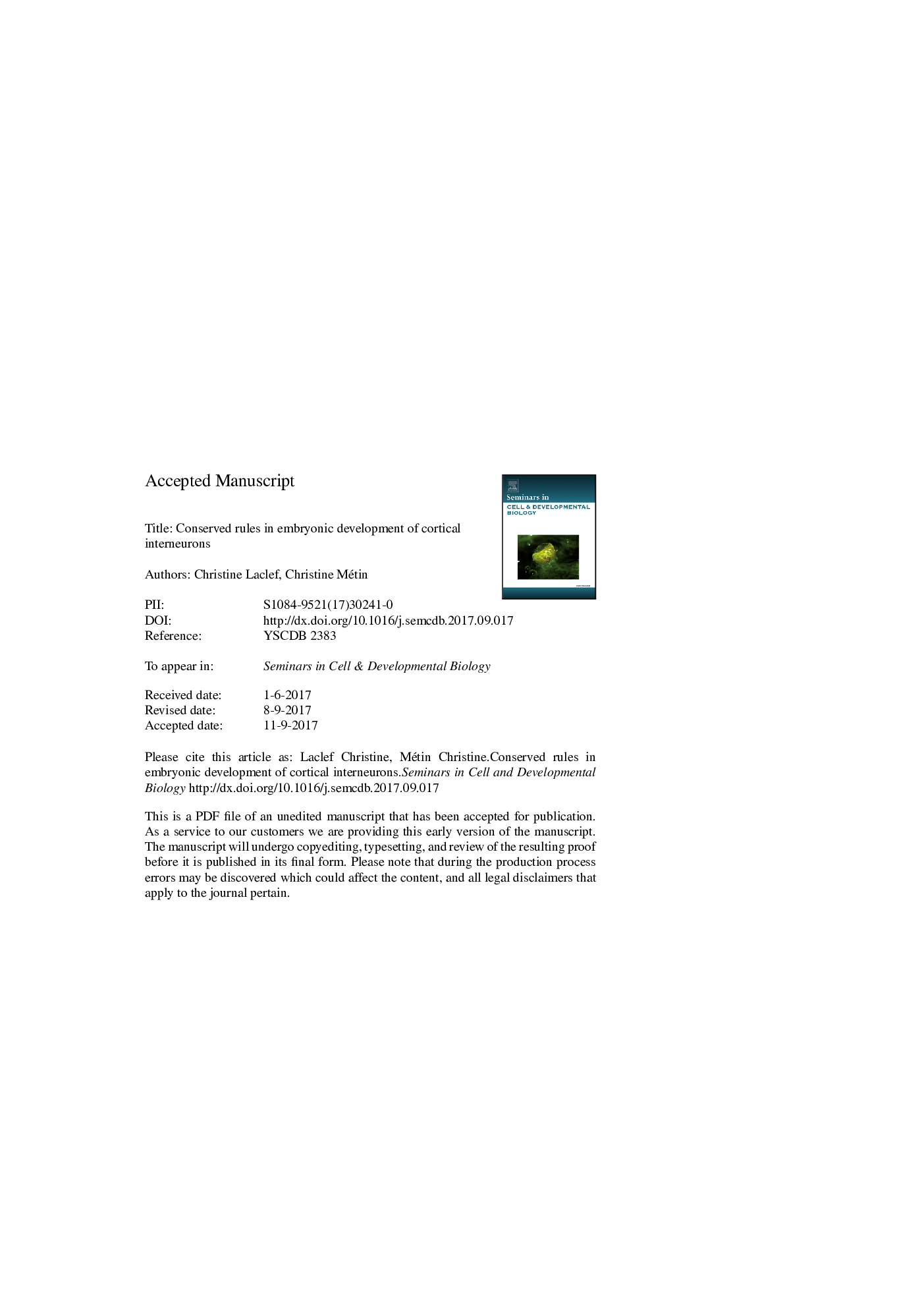| Article ID | Journal | Published Year | Pages | File Type |
|---|---|---|---|---|
| 8479699 | Seminars in Cell & Developmental Biology | 2018 | 35 Pages |
Abstract
This review will focus on early aspects of cortical interneurons (cIN) development from specification to migration and final positioning in the human cerebral cortex. These mechanisms have been largely studied in the mouse model, which provides unique possibilities of genetic analysis, essential to dissect the molecular and cellular events involved in cortical development. An important goal here is to discuss the conservation and the potential divergence of these mechanisms, with a particular interest for the situation in the human embryo. We will thus cover recent works, but also revisit older studies in the light of recent data to better understand the developmental mechanisms underlying cIN differentiation in human. Because cIN are implicated in severe developmental disorders, understanding the molecular and cellular mechanisms controlling their differentiation might clarify some causes and potential therapeutic approaches to these important clinical conditions.
Keywords
NPYLGESVZPOAnNOSMGEVIPSSTGFPCGEOSVZgamma-aminobutyric acidCortical interneuronslateral ganglionic eminencecaudal ganglionic eminenceCinSubplateneuronal nitric oxide synthaseSomatostatincortical plateHuman cortexventricular zonemarginal zonesubventricular zoneintermediate zonemedial ganglionic eminenceParvalbumingreen fluorescent proteinvasoactive intestinal peptideCalretinincalbindinGABANeuropeptide Y
Related Topics
Life Sciences
Biochemistry, Genetics and Molecular Biology
Cell Biology
Authors
Christine Laclef, Christine Métin,
